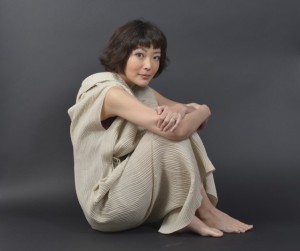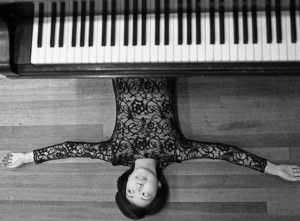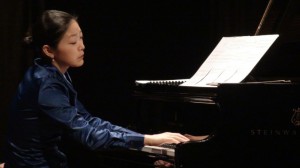コミータスが恋する日本人のピアニスト
Komitas music is played by many musicians. There are also foreign artists among the composer fans. Pianist Ichijio Keiko is from the Land of Rising Sun. She lives in Amsterdam and every year she has a number of solo concerts in the Old World. She is a laureate of numerous awards. After «playing the all classics» Keiko decided to play Komitas. Accordingly, Komitas became one of the preferred composers of Keiko. Komitas music is frequently played during Shichijo’s solo concerts. Imyerevan.com web-site took an interview from Keiko Shichijo in order to know her secret love to Armenian music.

When and in what circumstances have you heard Komitas for the first time?
The first time my connection with Komitas music was when I listened his «6 dancing music for piano». I cannot imagine what happened to me. The music was so natural and gentle that I unconsciously began playing.
You have never been in Armenia, what are your perceptions to Komitas homeland?
I think the next year I can have a visit to Armenia. I want to study Armenian national music. I think this country is a kind of symbiosis between the East and the West.

When do you decide to play Komitas and Mansuryan?
Once during a concert duduk was played, here in this concert Armenian music had certainly to be played. Accordingly, the concert organizer tried to find the composer whose music would be the combination of classical and modern trends. Finally Komitas «dance» music was chosen.
Is it difficult for Japanese pianist to play Armenian music?
Fortunately, I have no any difficulty in playing Armenian music. Maybe there is a mysterious connection between Armenian and Japanese nations.
What about the feelings when you play Armenian music?
Although Komitas music is mainly spiritual, however, his music has wonderful opportunity. That is it mentally makes people go far from his/her homeland and remember his/her national identity. His piano music is also very sensitive. This music has no any unnecessary note, everything is very transparent. I like this minimalism very much. In my opinion this is directly connected with spiritual one. The same I feel when playing Motsart. I have a strong feeling of nostalgia.

Do you frequently include Armenian music in your solo concert programs?
During my last concert I played Komitas music for five times.
Do you know what about Komitas music? Do you know the notion of it, for instance, «Erangner» or «Maralner»?
I know translation of some words, the others I don’t know. However it is very difficult thing and there is no so much time to spend on it.
Is there any similarity between Armenian and Japanese culture and music?
Some similarities can be seen in national instruments. Actually the musical instruments of different regions may have a lot in common. For example, Japanese sakusato instrument is very similar to flute.
What are your perceptions with the word «Armenian»?
Of course, Komitas Vardapet! Being Far East musician who lives in the West and play music of the Eastern composers I always think what connection I could have with other cultures.
It is really very difficult. This study is the main topic of my music. Accordingly, from this point of view I have much interest in Armenia. Living in the Netherlands Armenia seems to be as an eastern country. When I mentally go to Japan I begin thinking as Japanese so I see Armenia as the western country. Maybe it is the fact that Armenia first adopted Christianity. In Armenia the East and the West are intermixed and Komitas is a vivid example of this. I have lived in the Netherlands for a long time, accordingly, Komitas music helps me to return to my roots, even though I am not Armenian.
http://imyerevan.com/ru/culture/view/9630/から取られた材料
Keiko Shichijo http://keikoshichijo.com/
translated from Armenian into English by Tatev Harutyunyan











